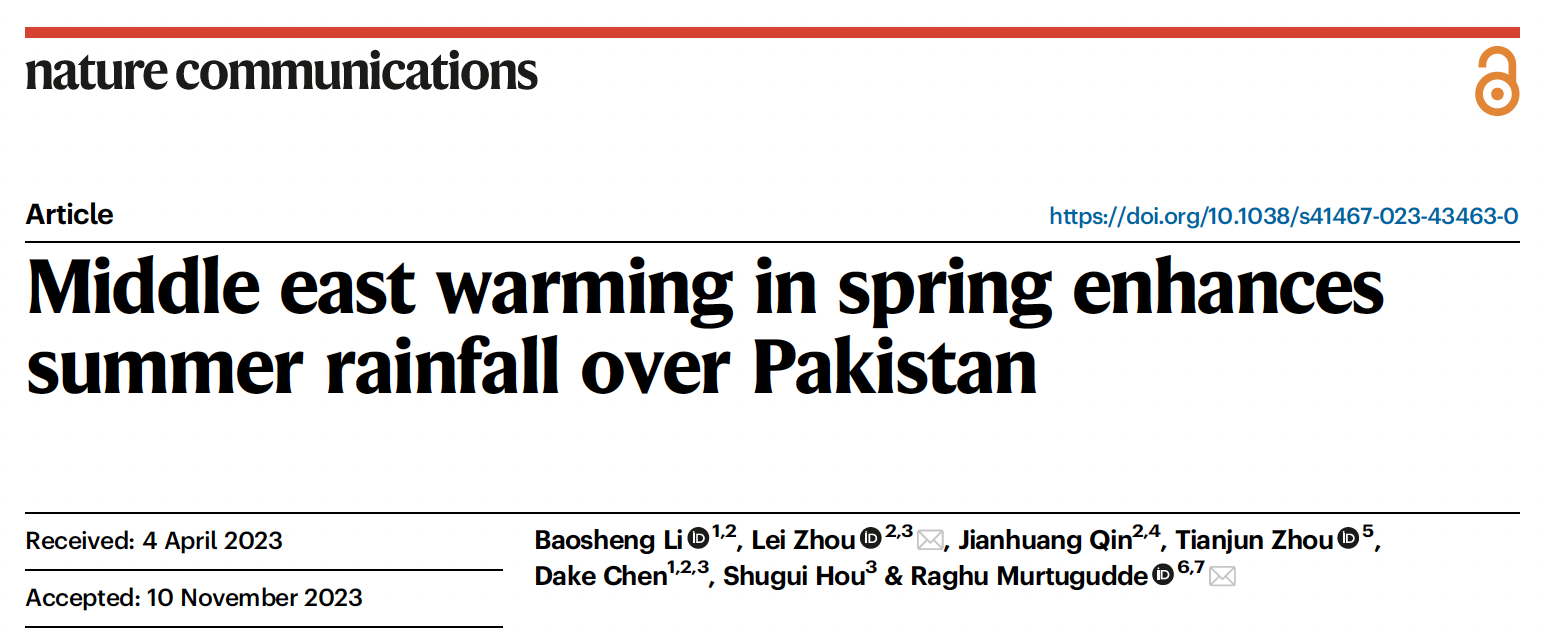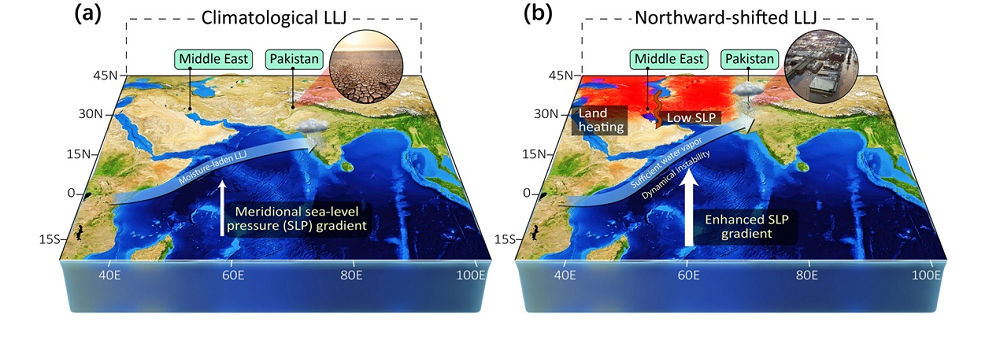News
Recently, the international authoritative academic journal Nature Communications published online the latest research findings of the SIO entitled “Middle east warming in spring enhances summer rainfall over Pakistan”, stating that the warming of spring ground temperature in the Middle East over the past 40 years will enhance summer rainfall in monsoon marginal areas such as Pakistan.
The first author of the paper is Ocean Star Post-doctor Li Baosheng from the State Key Laboratory of Satellite Ocean Environment Dynamics of the SIO, and the joint corresponding authors are Professor Zhou Lei from Shanghai Jiaotong University and Professor Raghu Murtugudde from the University of Maryland; The collaborators include Academician Chen Dake of the SIO, Researcher Zhou Tianjun from the Institute of Atmospheric Physics, Chinese Academy of Sciences, Professor Hou Shugui from Shanghai Jiaotong University, and Associate Professor Qin Jianhuang from Hohai University.

Located on the northern edge of the South Asian monsoon, Pakistan has a typical arid and semi-arid climate. However, according to the report of the Ministry of Water Resources of Pakistan, it has been affected by floods every year since 2010 and has suffered record breaking flood events, such as the flood of the century in Pakistan in 2022, which is known as the most severe natural disaster in its history. In response to the scientific issue of frequent floods in Pakistan, it is found in this study that during the South Asian summer monsoon, rainfall in marginal monsoon areas such as Pakistan and northwest India increased by 46% from 1979 to 2022 and is increasing at a rate of 0.4-0.6 mm/day per decade (Figure 1), indicating that marginal monsoon areas such as Pakistan are facing a gradually increasing risk of flooding.

It is also found in this study that the Middle East is warming in spring at a rate of 0.5°C per decade. The warming of the Middle East in spring can cause a drop in sea level pressure in the region, leading to an increase in the sea level pressure gradient on north and south sides of the Indian Ocean and an enhancement of cross-equatorial flow, which in turn results in a low-level jet wind field in the lower atmosphere over the Arabian Sea in spring; This process continues until the summer monsoon breaks out, and the low-level jet is further strengthened and moves northward. The low-level jet, as an important component of the summer monsoon, is a jet zone with a central wind speed of 20-30 m/s located at 850 hPa. The research shows that the low-level jet over the Arabian Sea has been moving northward at a rate of 0.27 latitudes per decade since 1979. The low-level jet moving northward will transport the abundant water vapor originally transported to central India northward to Pakistan and northwest India; In addition, the horizontal shear of the wind field on the north side of the low-level jet will produce strong air vortices, which not only increases atmospheric instability but also strengthens low-level water vapor convergence. Ultimately, the unstable energy and water vapor supply achieve cross-seasonal sea-land-air multi-layer coupling, leading to increased rainfall and flood risks in the marginal monsoon area. (Figure 2)

-
Prev: The United Nations Ocean Decade “Digital Deep-sea Typical Habitats Programme” was officially launched
Next: The delegation headed by Deputy Director Chen Jianfang participated in the International Symposium of the United Nations Regular Process on Strengthening the Ocean Science-Policy Interface



